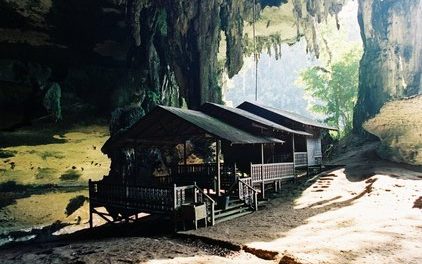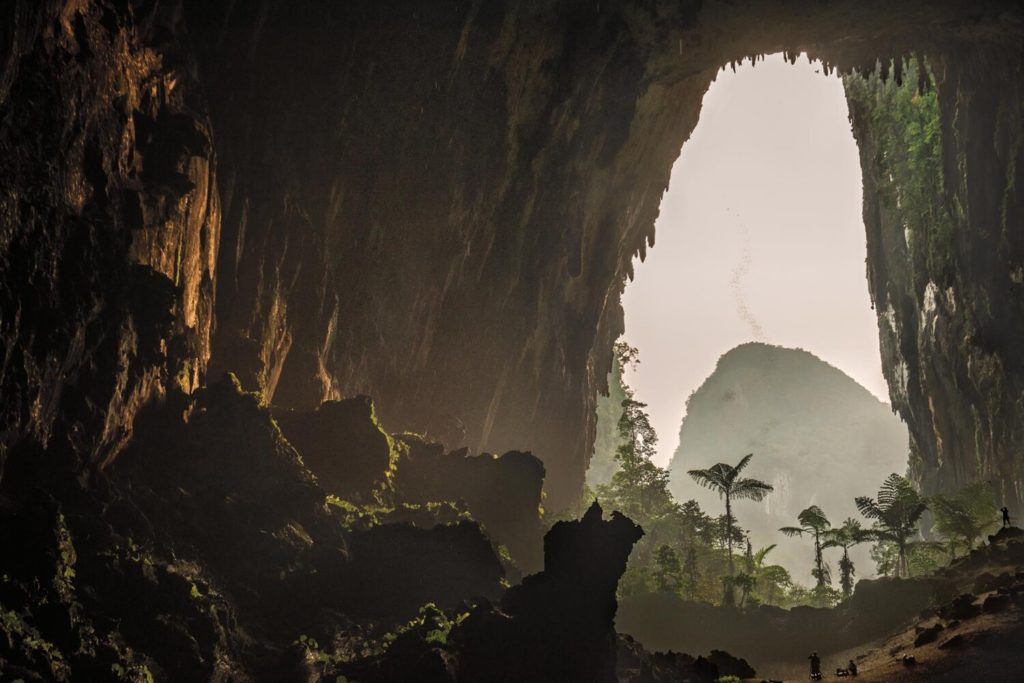
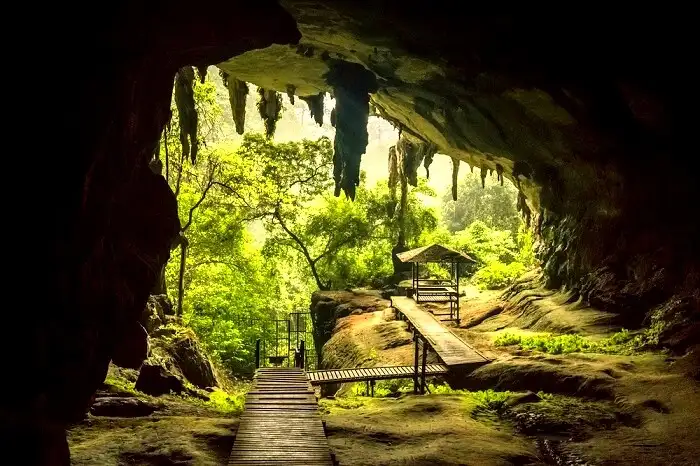
Mulu Cave
Flying in offers you a unique bird’s eye view of the vast tropical river systems that weaves their way to the South China Sea. On your descent, you’ll get your first glimpse of the Melinau Formation which rose from the sea floor around 5 million years ago and now has some of the largest and most famous caves in the world.
Mulu World Heritage area has an airport, a hotel, a very small village with a clinic and primary school. Then there is Mulu National Park – 85 000 ha of some of the oldest pristine rainforests in the world! You will only get to see a small part of this because inside Mulu National Park the only modes of transport are longboats and our own two feet.
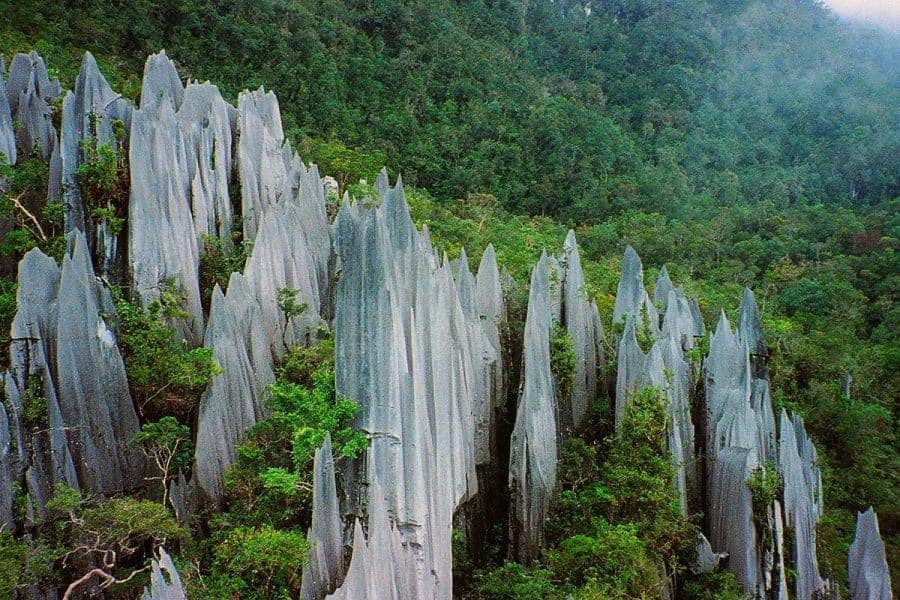
Your adventure should start with the best of our show caves, Deer Cave in the afternoon to catch the iconic/ famous bat exodus and a boat ride to Clearwater Cave in the morning. Although it is fully possible to do these two iconic outings in one day it is better to do it on separate days because of the high humidity sapping your energy. Rather combine one of the show cave outings with an unguided walk at your leisure. Mulu also offers more extreme high altitude adventures like climbing Gunung (Mt) Mulu and the iconic Pinnacles. Beware, for these adventures you need excellent health and fitness.
Niah Cave
Although Niah National Park is one of Sarawak’s smallest national parks, it is certainly one of the most important and unusual attractions to visitors. What is most interesting about Niah is that one of the main claims to fame is the birthplace of civilization in the region. The oldest modern human remains in Southeast Asia along with many other relics of prehistoric man were discovered about 40,000 years ago, making the park one of the most important archaeological sites in the world.
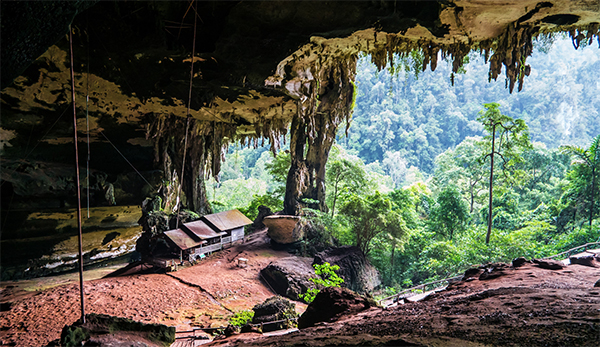
In 1958, a discovery was made which confirmed Niah as a site of major archaeological significance. A team unearthed a skull at the West Mouth of the Great Cave, which was estimated to be 40,000 years old. It was the skull of a modern human (Homo sapiens). Apart from that, plenty of human settlements in the area like tools, cooking utensils and ornaments, made of bone, stone or clay were found. These items found suggested that a long period of settlement reaching back into the Paleolithic era (the earliest part of the Stone Age). Further excavation works are still on going.
Besides that, the Subis River (Sungai Subis) flows along the park’s western border. Not forgetting a large, almost vertical limestone massif, Mount Subis (Gunung Subis), which rises from the plain little above sea level and covers about 60% of the area. The limestone was originally formed as a coral reef in the Lower Miocene. Later it was uplifted and modified by faulting and erosion.
